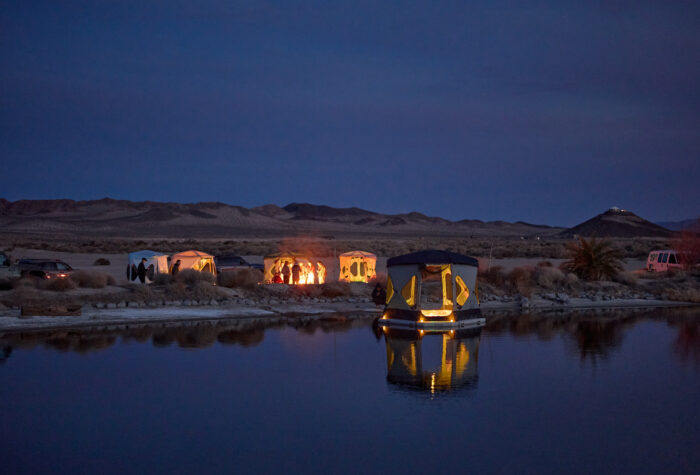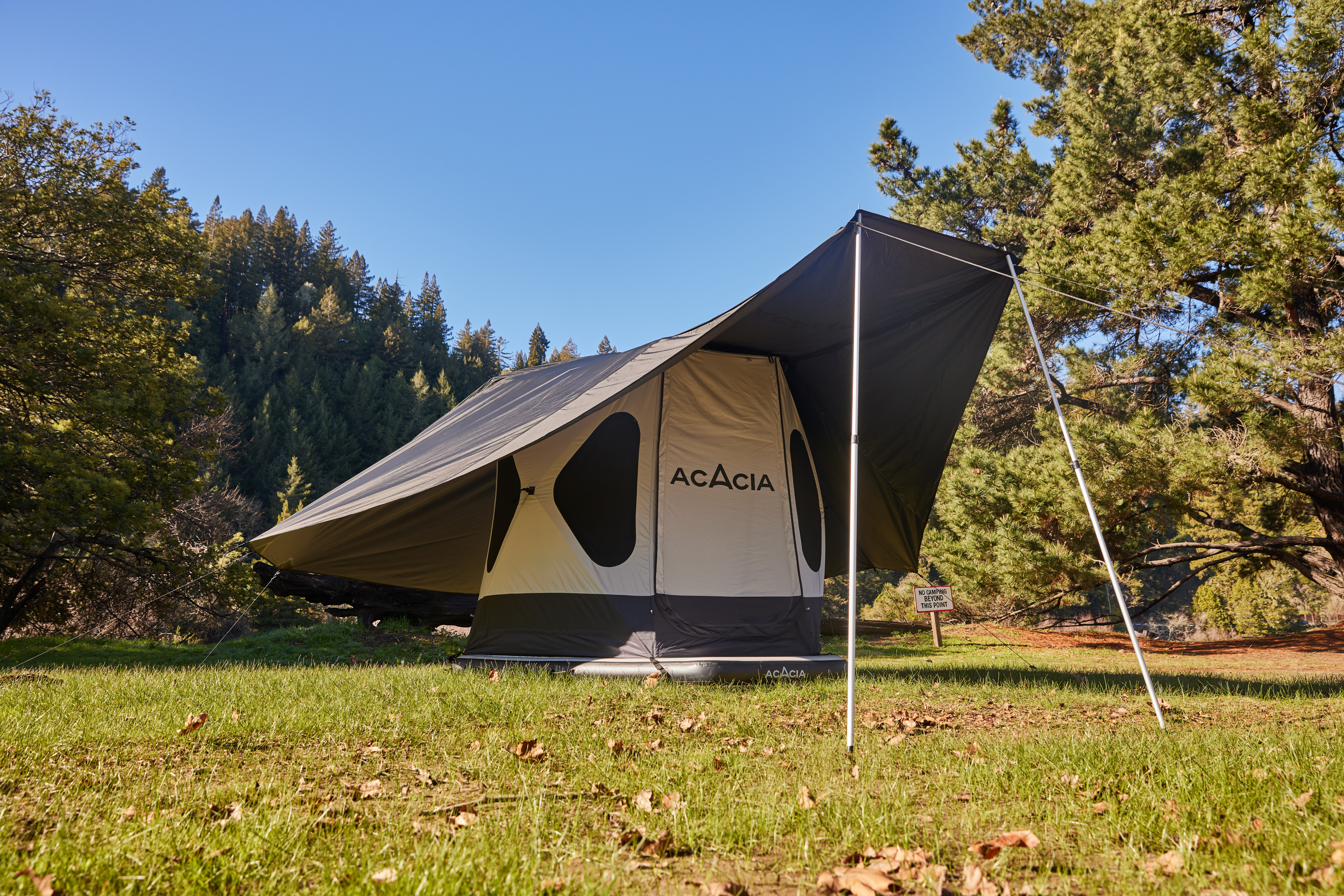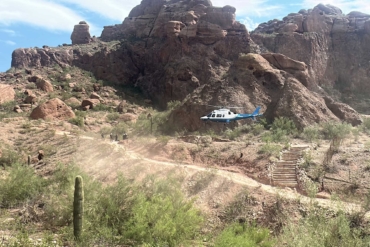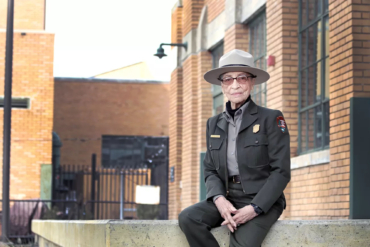Tents come in all different shapes and sizes. Car camping tents can accommodate families of people, while lightweight backpacking tents are much easier to carry in a pack. And of course, ultralight tents, which weigh next to nothing, pack down small and serve as little more than a film of fabric between you and the elements.
Then there are tents like the Space Acacia. This 84-pound pop-up tent is like a mini yurt, meant to turn any boring old campsite into a full-on glampsite.
Perhaps the coolest part about this space-age camping shelter? The floor is made from a similar material to inflatable standup paddleboards (SUPs) — meaning that you’re never actually sleeping on the ground in the Space Acacia — and the tent can float as well.
If you’ve ever had dreams of shoving out to sea sleeping in a pop-up tent, the Space Acacia was made for you.
What Is the Space Acacia?

The tent itself really has only three major pieces: the main body, the rainfly, and the inflatable floor.
The pop-up design is reminiscent of ice fishing tents. It uses a fixed internal skeleton that pulls open and snaps in place. The durable PVC floor (what Acacia calls the “Air Floor”) is 6 inches thick and requires inflation. The floor also doubles as a “bed,” or your sleeping pad (and sleeps two to five people depending on the model). The rainfly uses two poles to create a canopy and requires six anchor points.
According to Acacia, this is a four-season tent. It self-ventilates through mesh windows in the summertime and insulates with the rainfly draped over top in the colder months.
Once it’s set up, the Space Acacia looks pretty futuristic. And it’s big. Whether you get the two-person size (which weighs 84 pounds) or the “XL” four-person size (which weighs 120 pounds), this thing takes up a lot of space.
Luckily, if the campground is full, you can just set it up on the water. Just kidding.
Inflatable ‘Air’ Floor

Some tents come with footprints, but the Space Acacia comes with a floor that inflates like SUP. The foldable floor is carpeted (yes) and waterproofed. It inflates to a max 10 psi while most paddleboards recommend a psi between 15 and 20. It has a max weight limit of 4,000 pounds.
The Acacia website says you can choose how firm or soft the floor is by adjusting how much you inflate it. It uses two layers of PVC material, one layer of the base fabric, and “space yarn” internally to provide tensile support.

So if you want to take your Space Acacia tent out on the water, it’s seaworthy. Set it up in a pool or on a lake or pond. Cast a line from your front door and fish from the comfort of your waterborne dwelling. Maybe even set up on a beach and wait for the tide to roll in and pull you out to sea.
We’re still trying to figure out what the functional purpose of a floating tent is. But it’s certainly novel. And you pay for that novelty up front.
Space Acacia Floating Tent Price & Availability

The Space Acacia launched on Indiegogo this week. And the brand is offering 12-23% discounts on the Space Acacia for those who preorder through the campaign. But even then, this is a pricey tent.
The XL runs for $1,736 ($1,349 with the 22% discount offer) and comes with the floor, the rain canopy, a free electric pump, a lighting system, and a 5-year warranty. The two-person tent is priced at $1,236 ($999 with the 19% discount) and also comes with an electric pump and lighting system.
Then there are options to buy only the XL tent without the floor, canopy, pump, lights, or warranty for significantly cheaper. Check out the Indegogo campaign to see all of the pricing and purchasing options.
But hurry up — if you want any of the opening day discounts, there is only a short time left to make your purchase. Then preorders will be for full price.








